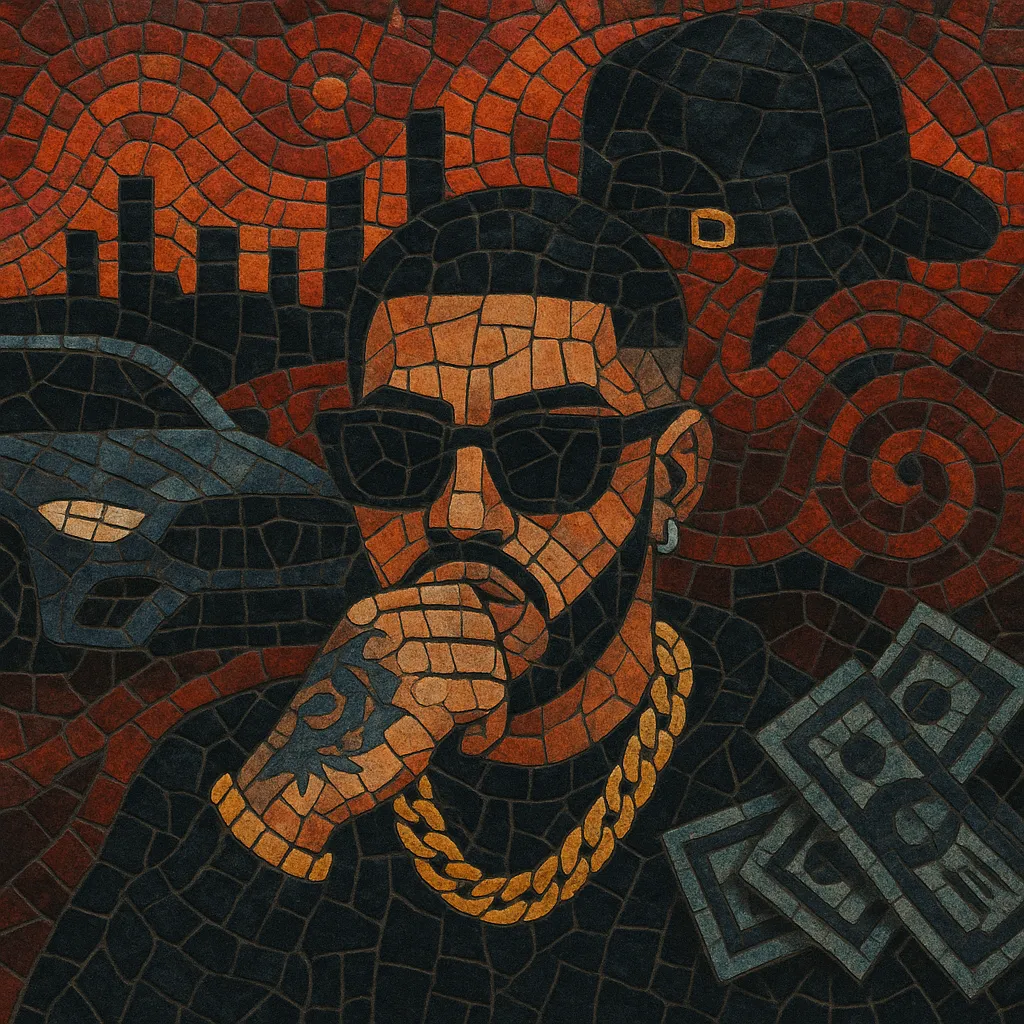Trap latino is a Spanish-language adaptation of Southern U.S. trap that fuses 808-heavy drum programming, half-time grooves, and triplet hi-hats with the melodic sensibilities and rhythmic swing of reggaetón/dembow.
Typically sitting around 65–75 BPM (or 130–150 BPM in double-time), its sound is driven by sub-bass glides, crisp snare/clap placements, rolling hi-hat subdivisions, and liberal Auto-Tune. Lyrically, it spans street narratives, braggadocio, nightlife, love and heartbreak, often delivered in Puerto Rican slang and broader Latin urban vernacular.
The genre’s aesthetic blends dark, moody textures and minor-key harmonies with catchy, chantable hooks, making it at once club-ready and emotionally resonant, and it has become a core pillar of the wider “urbano latino” movement.
Latin trap emerged in Puerto Rico in the early-to-mid 2010s as local rappers and producers adapted the sonic DNA of Southern U.S. trap—808 sub-bass, skittering hi-hats, and half-time drum patterns—to Spanish-language flows and the Caribbean rhythmic sensibilities of reggaetón/dembow. Producer collectives and labels like Hear This Music (DJ Luian & Mambo Kingz) catalyzed the sound via YouTube and SoundCloud, giving early visibility to artists such as Bryant Myers, Anuel AA, Noriel, and Arcángel.
A run of viral singles brought trap latino to the mainstream. Tracks such as “La Ocasión” (2016) showcased a moody, minimal aesthetic; Bad Bunny’s “Diles” and “Soy Peor” (2016) cemented the genre’s mass appeal; and high-profile collaborations (e.g., Maluma with trap artists) pushed the sound onto radio and global playlists. The combination of stark 808s, melodic Auto-Tuned hooks, and Spanish street slang defined a new, distinctly Latin version of trap.
By 2017–2019, trap latino artists were topping international charts and collaborating across borders. Bad Bunny’s rapid rise and collaborations with pop and hip-hop stars helped the sound permeate global markets. Simultaneously, regional scenes flourished: Argentina developed its own wave (feeding into what’s often called Argentine trap), Spain and the Dominican Republic added local flavors, and the genre became central to the broader “urbano latino” umbrella.
In the 2020s, trap latino diversified. Artists blurred lines with reggaetón, dembow, R&B, pop, and even regional Mexican music. Its drum language and vocal aesthetics influenced neoperreo and helped shape fusions like corrido tumbado and electro corridos. The genre now alternates between darker, brooding cuts and melodic, romantic trap ballads, while maintaining its hallmark 808-driven foundation.


